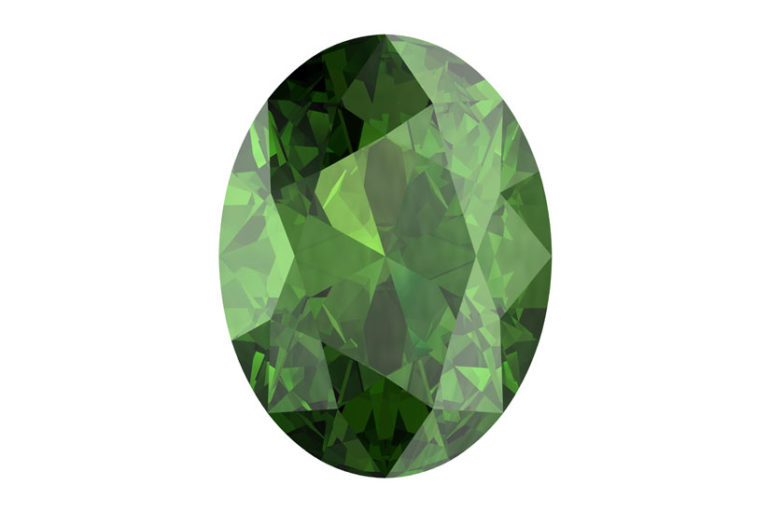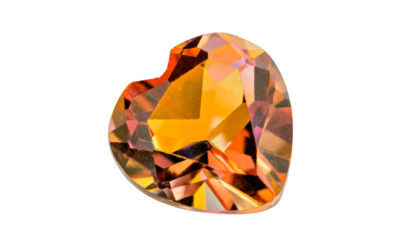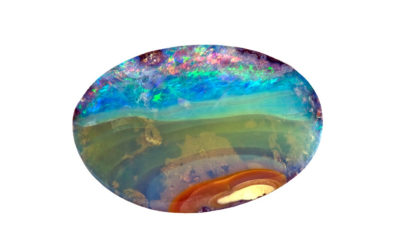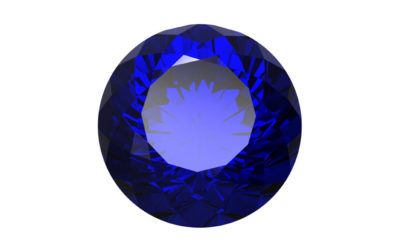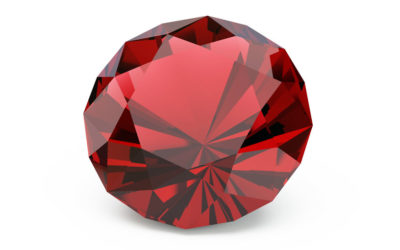August is another month that is unique. It has three different and lesser-known birthstones. This, by no means, minimizes the beauty that each of these gems brings to the month. If anything, it gives them a sense of mystery – at least for those who aren’t familiar with them.
If you aren’t familiar with them, that’s not a problem. We’ll be taking a look at August’s three different birthstones – the peridot, sardonyx, and spinel.
An introduction to the peridot, sardonyx, and spinel
The peridot is arguably the most familiar and popular of the three birthstones.
The gem is said to contain healing properties and magical powers that protect the wearer from night terrors. They’re also known for bringing the wearer greater success in the upcoming year, increased power, and greater influence The gem is associated with the power to keep away evil energy, and therefore, emanates a sense of serenity and prosperity. (August Birthstone)
Peridot is sacred to Pele, the Hawaiian goddess of fire and volcanoes, as the gem is meant to be a symbol of her tears.
The sardonyx, though not as famous as, say, the diamond or ruby, has a history of popularity behind it. Interest in the gem dates back to the Second Dynasty of Egypt, which is more than 4,000 years ago.
Ancient Romans and Greeks battled their foes with talismans that had a sardonyx in it. Engraved on the gem were portraits of gods and heroes such as Mars or Hercules. The purpose of these pieces of jewelry was to harness the proverbial stream of energy from the great legends of the past. Alongside the channeling of bravery, courage, and victory was protection on the battlefield.
Many gemologists consider the third gem of August, the spinel, the most underappreciated gem of all birthstones. Chances are, if you randomly went up to someone in public and asked what a spinel is, many people wouldn’t know.
Not helping it much is the fact that it’s constantly confused with the gems sapphire and ruby. They’ve also been known under different names. In the mines of Southeast and Center Asia, there are large spinel crystals that have been unearthed and are called Balas rubies.
They became a valuable property for kings and emperors. They were often passed through the centuries as spoils of war. Ironically, some of the famous rubies of the past were revealed to be spinel. This is especially true for some of the gems of the Crown Jewels of England.
What are the gems made of?
The peridot is known as a variety of olivine. Ironically, the olivine isn’t officially a mineral because it’s made of two separate minerals – fayalite and forsterite. The fayalite is rich in iron and the forsterite is rich in magnesium.
The best-colored version of the gem, according to gemology, has less than fifteen percent amount of iron and has nickel and chromium in small amounts. Ultimately, these all contribute to the color that the gem has.
The sardonyx is two words combined into one – “sard” and “onyx.” In Greek, the word sard means “reddish brown,” and onyx means “veined gem.” This makes sense when you look at the gemstone as it consists of reddish brown and white color bands on its surface. Combined, we have sardonyx.
Peridot is a form of microcrystalline quartz that has a different-colored band in the backdrop of its main color. The gem is part of the chalcedony family. It has small quartz fibers that lay in multiple layers, formed from deposits that lay out one after another and that were compressed. The layers range from translucent to opaque.
The spinel is known as an oxide mineral. It is often discovered in octahedral crystals and is found in three different geographical scenarios: merging as crystals found in dolomites and limestones, which have come in contact with metamorphism–igneous rocks which have strangely-shaped grains and water-worn grits in alluvial deposits.
While the gem has lived in the shadow of the ruby, for which it is constantly mistaken for, the gem did begin to receive notoriety after it became the most recently announced birthstone for August.
Where are these gems located?
Nowadays, you’ll find peridot, also known as peridot olivine in the San Carlos Apache Indian Reservation located in Arizona. It has also been mined in other parts of Arizona, New Mexico at Kilbourne Hole, Arkansas, Nevada, Hawaii, and Arkansas within the United States.
In other countries – Tanzania, Sri Lanka, South Africa, Saudi Arabia, Pakistan, Norway, Myanmar (Burma), Mexico, Kenya, Egypt, China, Brazil, and even Australia.
Found in India mainly, sardonyx is the “veined gem.” It is also found in other countries such as Brazil, Uruguay, Czechoslovakia, and Germany. Within the United States, the birthstone is found in two different locations – Oregon and in the Lake Superior region.
Spinel is interesting as it is both chemically and physically resistant to weathering. The birthstone tends to weather out of the marble and is then moved by bodies of water like rivers and streams. They’re therefore placed in alluvial deposits.
They can be found in Myanmar, Vietnam, Cambodia, Thailand, Sri Lanka, and other countries. It is also mined in places like Tanzania, Nigeria, Madagascar, Australia, Tajikistan, Nepal, and Afghanistan.
The history of peridot — part one
The birthstone has an interesting history behind it. It is known in gemology as one of the oldest gemstones. The records that document it – as far as mining goes – go back as far as 1500 B.C.
The birthstone has a deep connection with ancient Egypt. Some historians even believe that the emeralds that were placed on Cleopatra actually may have been peridots. How deliciously deceivable!
The history of the gem is also different from the where and how it’s formed. Many of the gems we know and love are forms within the Earth’s crust. The peridot, however, is one of two exceptions, the other being the diamond.
They’re formed in the deeper part the Earth’s mantle. The gemstone forms within the magma in the upper mantle estimated to be roughly twenty to fifty-five miles deep! The gems are brought up to the surface by volcanic activity and tectonic interactions.
The gem, within the ancient world, was found mostly in Topazos Island, which is now known as St. John’s Island. It’s located in the Egyptian Red Sea. The source of the information came from Pliny the Elder’s popular book titled Natural History. It was explored in the 4th century B.C.
Some gemologists theorize that peridot was mistaken as topaz. It’s interesting to note that the word topaz could have been used for peridot and only as time passed did topaz come to represent the topaz we now know.
The birthstone was mined on Zabargad for about 3,500 years. Location wise, the island was lost to us for several centuries but was found once again in 1905. The island is small and is famously covered by fog most of the time. It’s located roughly thirty-five miles off the Egyptian coastal port of Berenice. (History of Peridot)
The history of peridot — part two
Mining within the grounds of Zabargad ended close to the beginning of World War II. Prior to that, the gem was found in talismans in the ancient world.
The gem was supposedly able to help lower the wearer’s anxiety. It also helped to make them more articulated and helped to facilitate more successful marriages and relationships.
The birthstone was also believed to have the ability to dissolve enchantments. Its power, in ancient times, was believed to strengthen when it was paired with gold. If it was meant to be worn to protect against evil energy and spirits, then the gem had to be pierced, strung on the hair of a donkey and worn on the left arm.
The gem also had a medical purpose to it. It was crushed into powder and used to help with asthma. It was also put in the mouth and held under the tongue to help lessen the thirst of someone who has a fever.
The gem even makes an appearance in the Book of Exodus, on the high priest’s breastplate. Included in the piece of war armor were stones of each of the twelve initial tribes of Israel, the beginnings of Judaism and Christianity. One of the gems is believed by some to be this birthstone.
The history of sardonyx — part one
Unlike many other gems, the sardonyx is easier to find and therefore less expensive. Even though it may not be as pricey as the others, this gem has still been an important part of history.
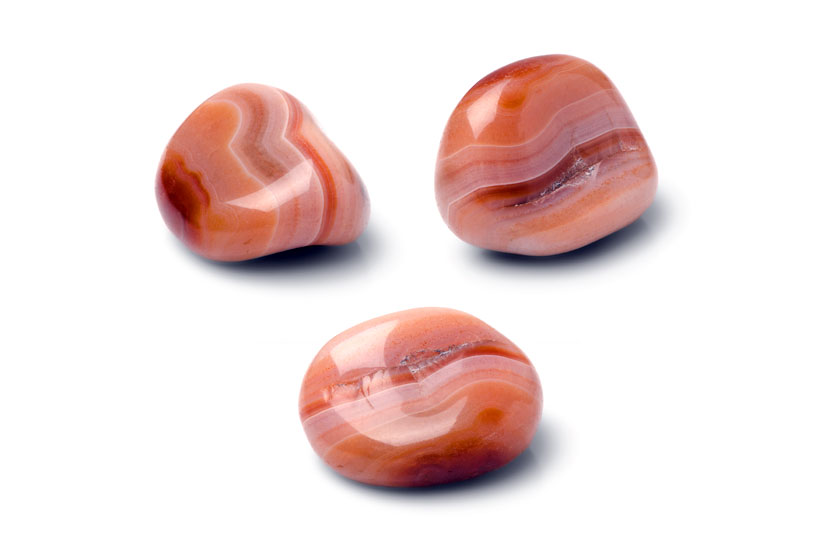
Sardonyx, the other birthstone for August
The Romans, in particular, loved them. They used them in a different way such as carving out pendants of the gods that they looked up to. The pendant, it was believed, channeled that particular god’s quality or representation.
The Romans also carved stamps out of the birthstone and used them as a wax seal for documents. The gem was used because the wax didn’t stick to it. It’s not hard to consider how the documents, probably quite important and sensitive in nature, give a hint about how the gem was important to the ancient world. It helped seal documents from prying eyes.
The birthstone is rumored to have healing powers, which can aid in dealing with stressful situations. Thus, the ancient Romans wore them for courage or reassurance.
Wearing a ring or a pendant, believed even today in certain circles, will help create a clearer mind and increase one’s ability to concentrate. It protects the wearer from ill will, too.
The history of sardonyx — part two
Cameos with the gem were popular, particularly in Ancient Rome. One outstanding proof of this lays in the depiction of the coronation of Constantin the Great in the “Road to Byzantium” exhibition” by the Hermitage Rooms. This isn’t the only image found of the ancient artworks in cameo work.
Perhaps what made the gem so alluring was the way the different bands of color gave the images an accent. Jewelry carves into the relief helped to bring out the background of the image.
The popularity of the birthstone has transitioned well into the modern day. What’s interesting to note is that many of the more contemporary designs actually reach back to many of the ancient styles and themes. In many of these cameo works, there is a blend of both the modern and the traditional, symbolized by the gem’s dual-layered shading.
The history of spinel
To get an appreciation for the newest birthstone of August, let’s first take a brief look at the history of modern birthstones.
Back in 1912, the National Association of Jewelers, which is now known as The Jewelers of America, took under its wing and began promoting a more modern list of birthstones. Spinel, during that time, was not on the list. None of the different factions: The National Association of Goldsmiths of Britain, American Gem Trade Association, and the Jewelry Council of America considered it for the list.
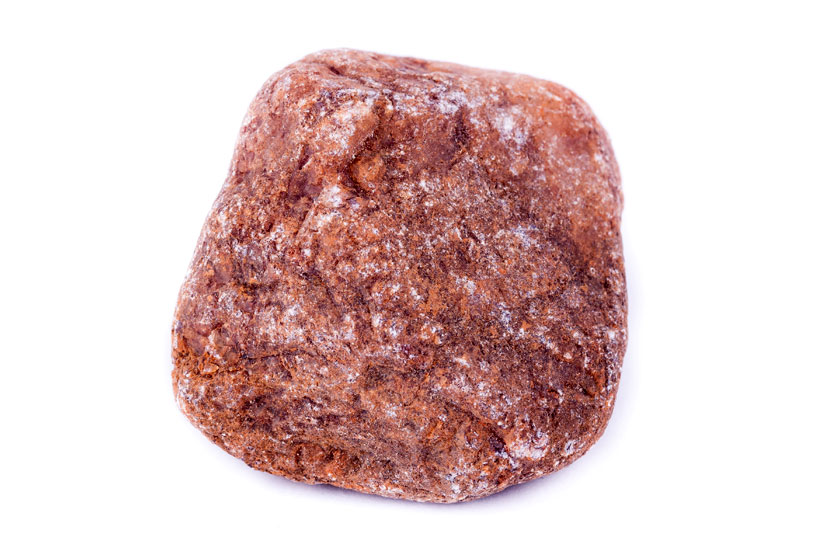
Spinel, another birthstone for August
It wasn’t until July of 2016 that the gem became a birthstone, and thus, became the birthstone of August. The change was made by both the Jewelers of America and the American Gem Trade Association.
Some believe that the decision was made to help bring more eyes and ears to spinel as a gem. Perhaps, it was meant to push it out of the shadows of its predecessors, especially the ones that it’s been constantly mistaken for. It is also one of the most varied colored gems. So why wouldn’t a promotion of the gem not be good? (Spinel: Red and Blue)
It helps to give people different choices. Not everyone likes to stick with tradition.
August is an interesting month. It’s the time in which summer has truly started and is usually when people start looking into the horizon and consider that the seasons will be changing soon, with the coming September and October months.
It’s a time of pondering while embracing the newness that we all feel under the summer sun. In a strange way, it would make sense that such a month would not only have three gems to represent it but that it would also be where the latest birthstone would find its new home.
References
GIA. “August Birthstone” GIA.edu, www.gia.edu/birthstones/august-birthstones (accessed November 15, 2018)
Gem Select. “History of Peridot” GemSelect.com, www.gemselect.com/other-info/history-peridot.php (accessed November 15, 2018)
Geology. “Spinel: Red and blue gemstones confused with ruby or sapphire” Geology.com, geology.com/minerals/spinel.shtml (accessed November 15, 2018)

